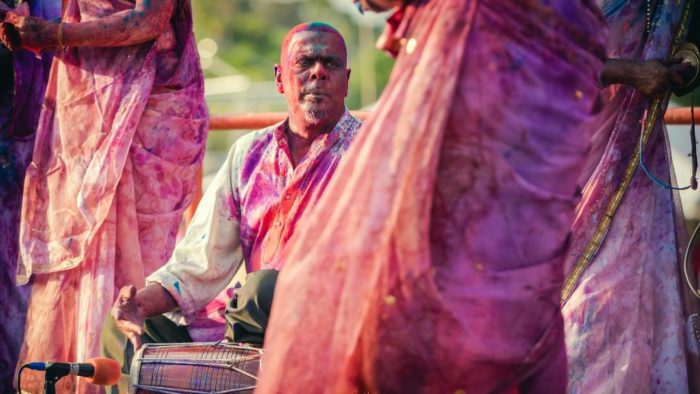Holi is called Phagwah by the Indo-Caribbean community as it is celebrated on full moon day in month of Phalgun. In Guyana and Suriname, Phagwa or Holi is all about keeping alive a tradition that first appeared on the islands when ships bearing plantation workers from UP and Bihar arrived here in the 19th century. In their hearts they carried with them memories of Abir, Gulal and Tesu filled pichkaris.
These nostalgia filled memories are enshrined in the Damra Phag Bahar – or, Phagwah Songs of Demerara – a chapbook of rhymed verses intended to be sung during Holi. Its author was the indentured Lal Bihari Sharma from Chapra, Bihar. The songs express a longing, a desire to be with the beloved, including the Divine beloved. The songs are songs of universal longing, imbuing love with colours which set the tone for Phagwa.

A festival that was celebrated as a modest, low key affair by the migrants has now become symbol of universal brotherhood. Honouring the message of Holi at the UN, the United Nations Staff Recreations Council initiated the celebration to embody the festival's spirit of bridging social barriers of language and status.
Indo-Caribbean immigrants from Guyana and Trinidad brought this celebration to the US. The Phagwah Parade in Richmond Hill, Queens is the biggest celebration in North America. Phagwah literally paints the streets as kids and families "colour" one another with dry powder and chase away the winter greys!
CSP caught up with Ziad Joseph of Trinidad and Tobago, who shared his thoughts on the magic of Phagwa, in the midst of caring for his toddler and five day old new-born baby.
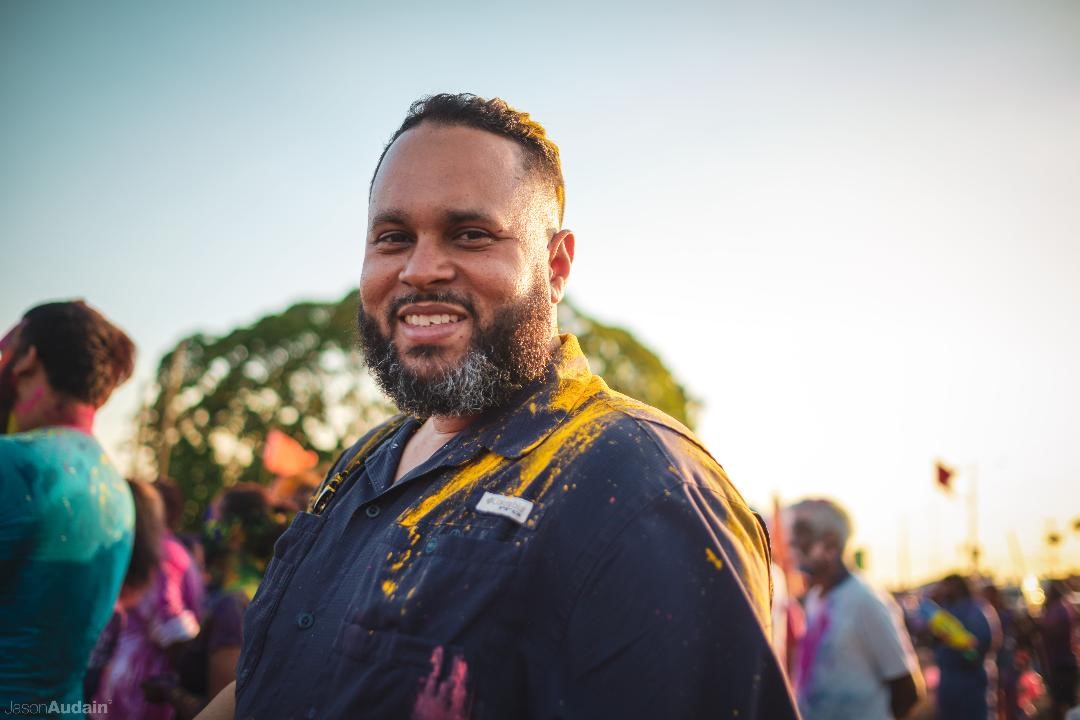
Ziad Joseph
Ziad chronicles Caribbean life through his lens. For his marvellous documentation he won awards form the TT Photographic Society in 2018 and 2019 as well as an Honorable Mention for Street Photography in the IPA International Photo Competition 2019.
He says “I am a born and bred Trinbagonian who is a part-time photographer in love with the Caribbean scene. I enjoy the beauty of the natural or built environment coupled with the addition of the human elements of the Caribbean people as is prevalent in cultural celebrations or our daily walk of life.”
About Phagwa he says, “In all honesty, prior to 2019, I have never actually participated in Phagwa celebrations far less photographed it. However, I have always seen the accounts of the celebrations and wanted to be part of the story and write my own account through my photography. As a result, I set out in 2019 to be part of and capture some images of the celebration.”
After speaking to veterans he decided to spend his first experience of the festivities at Aranjuez Savannah in Trinidad.
Recalling the day, he says, “I set out with my camera and telephoto lens on 24th March 2019, midafternoon with high expectations. I was not disappointed.”
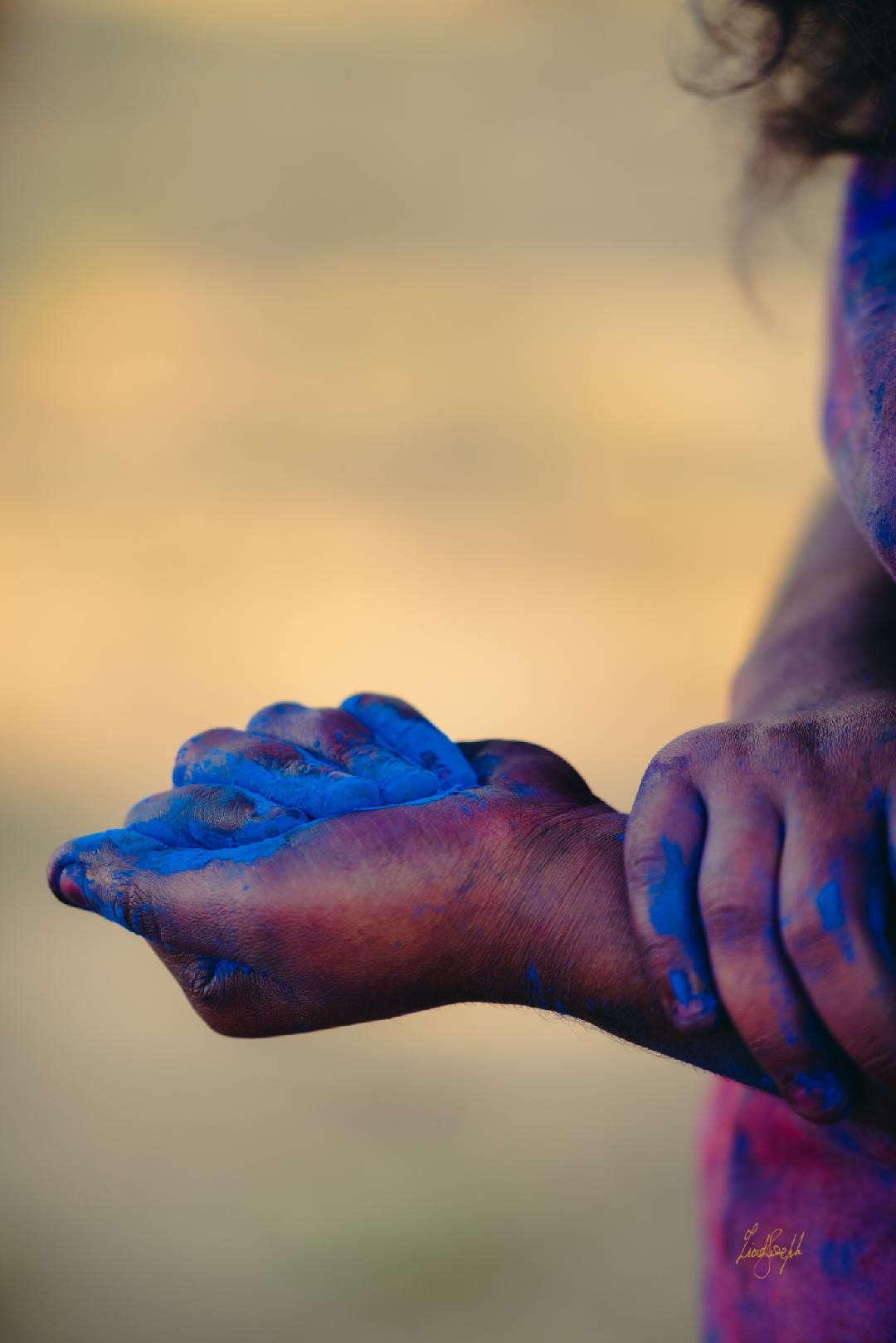
Major features of the festival included dance, music, songs and colours (called rang). For example, a variety of coloured powders are added to water (sometimes using waterguns or pichkaris to make it more fun) to prepare a bright-hued mixture; colours are applied to friends and family in celebration of life. A variety of special Holi dishes are prepared, including special confections and sweets; these delicacies and greetings are exchanged between people. The community members take advantage of this festival as an opportunity to rid themselves of “all types of enmity and animosity.”
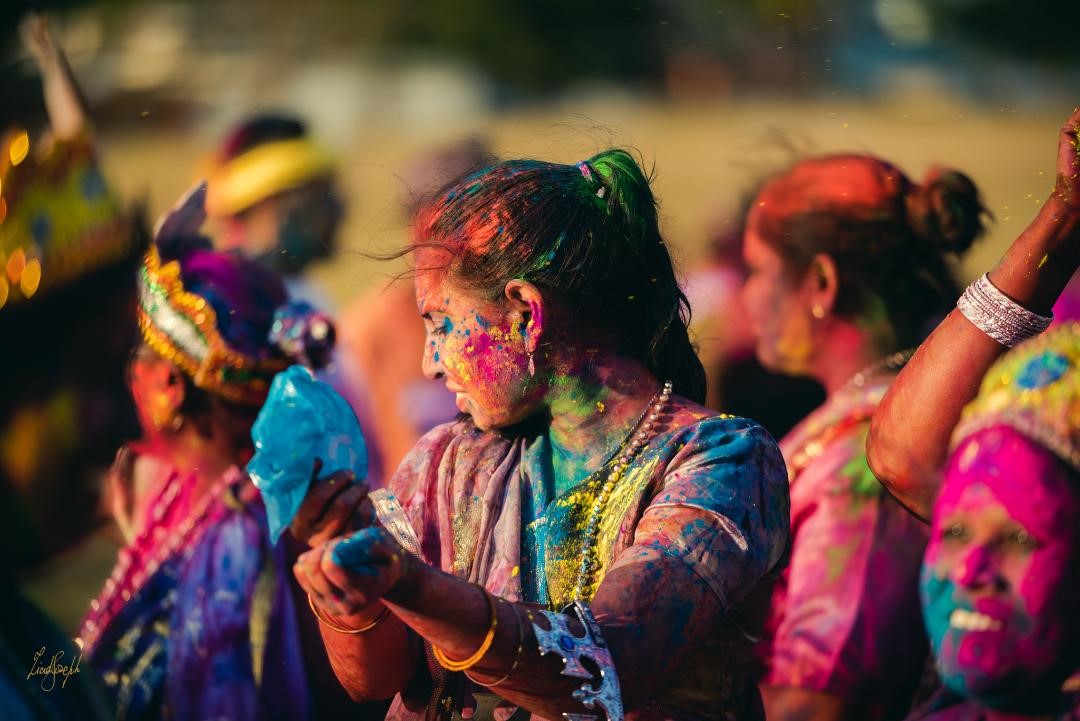
Another important feature of the Holi celebration in Trinidad is the chowtal - a traditional folk song. This special folk song is sung during this festival. The chowtal is generally played with two instruments—the majeera and the dholak.
Chowtal traces its origin to Bhojpuri folk music genres which was brought to the Caribbean by indentured labourers who migrated from Bihar and Uttar Pradesh. Chowtal songs are very high pitched and sung very loudly. The high-pitched music sets the mood of the festival. Many people join the celebrations, being attracted by this music and dance with the rhythm.

“Jubilant kids ran around the Savannah in their innocence, spraying colours on friends and strangers alike.”
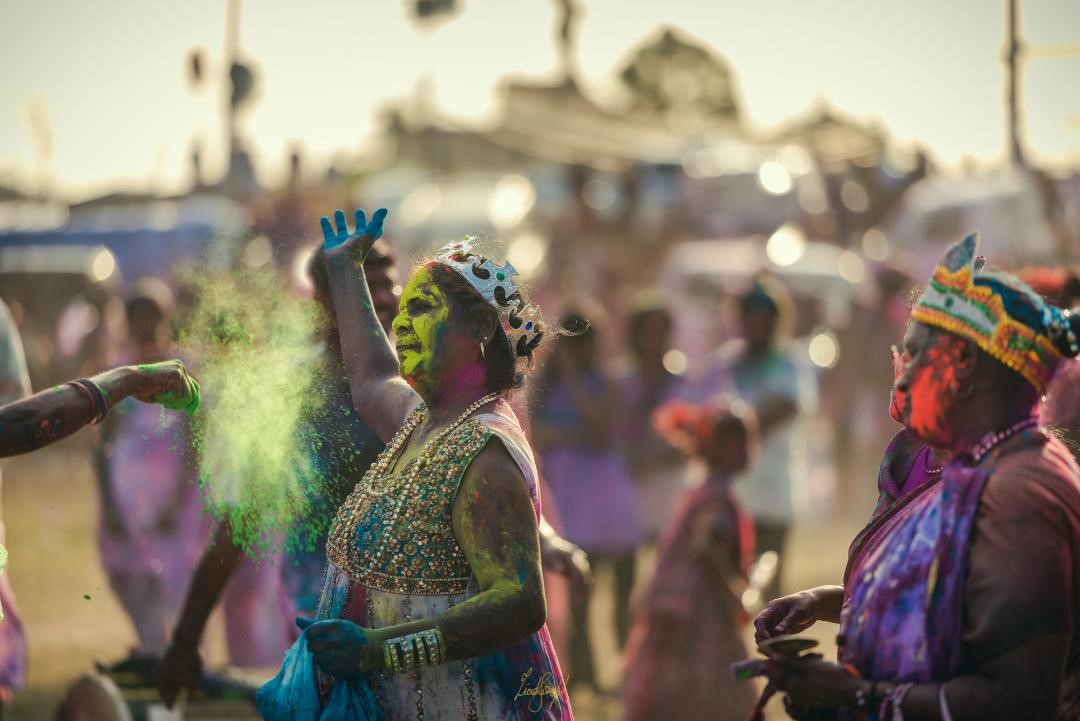
“Matching footsteps with them were the adults throwing abir and gulal dressed like their ancestors from the land of Krishna. My eyes were greeted with a multitude of vibrant people of all ages and ethnicities. I was amazed by the vivid colours of the people and the multi-colored stains of abir on their clothing and skin,” says Ziad.
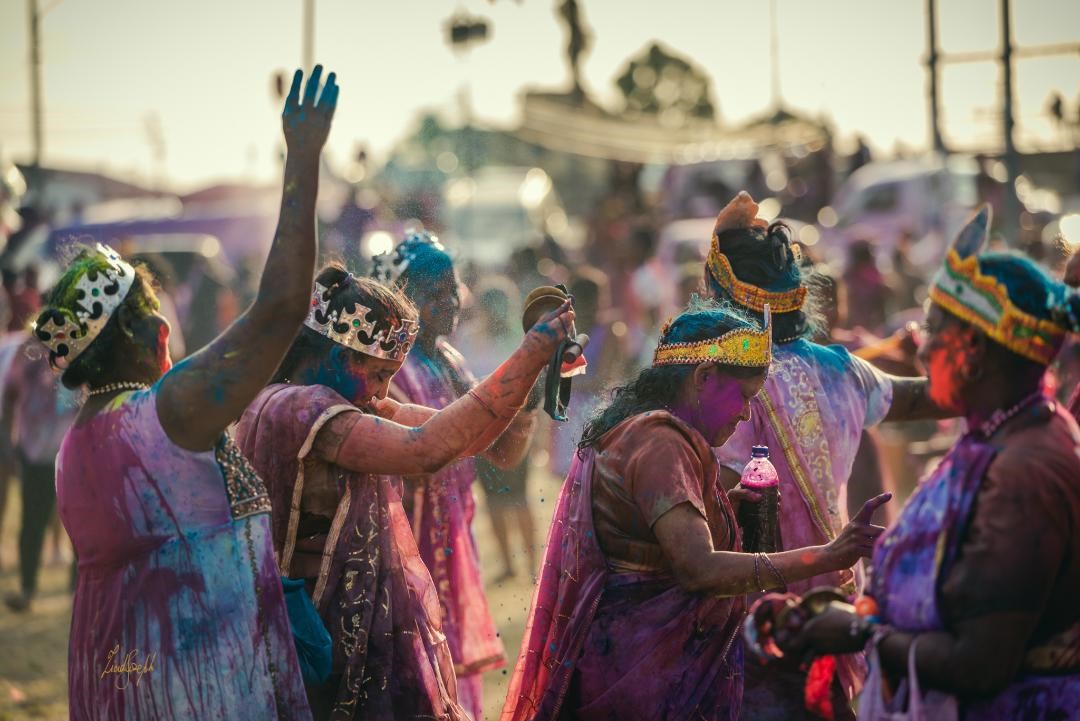
“As the afternoon progressed and the sun began to dip closer to the horizon, a soft glow of light diffused through the clouds of abir in the air like a rainbow as the evening descended upon the grounds and the close of the celebrations drew near.”
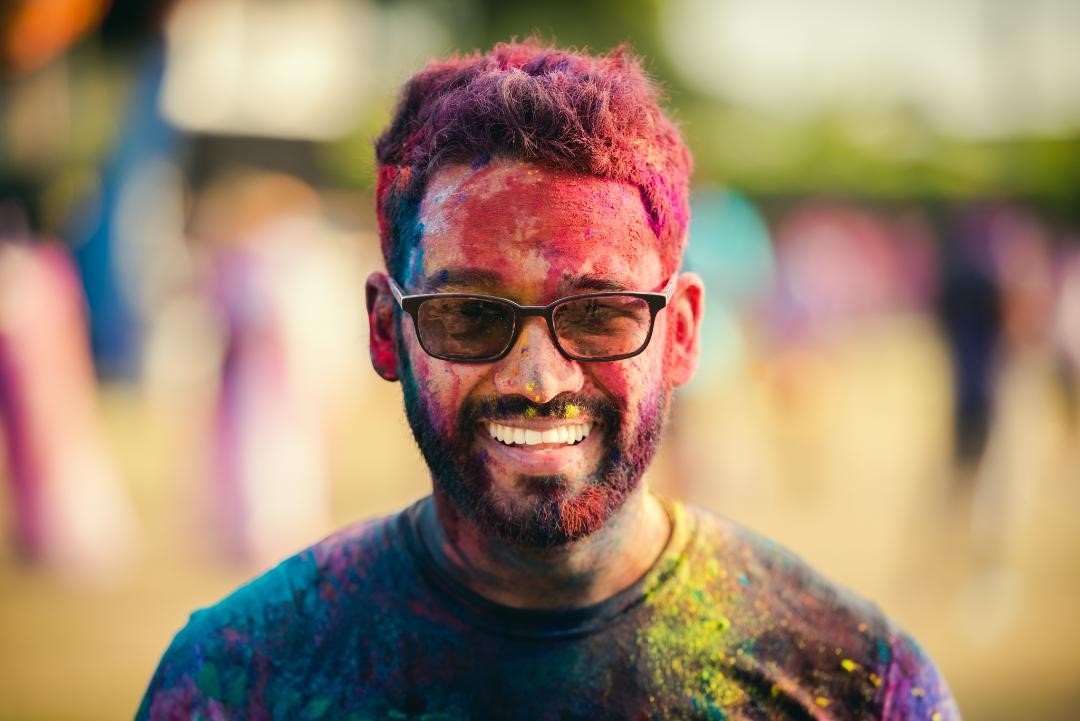
“And yet I could not stop clicking despite the fact that I, along with my camera and lens, was covered in all manner of colours; yellows, blues, reds, pinks at al from deliberate or accidental encounters with zealous participants in the festivities. I realized what it meant to be a part of Phagwa.”“
Hindus, non-Hindus, women, men, rich and poor participate in this colourful event. The colours add life, vitality and fun to the festival creating a happy atmosphere. The whole of the Caribbean islands bursts into a rich riot of colours. Holi strengthens the bond with families and friends and brings everyone together.
For Ziad, Phagwa is a must see for him on the cultural calendar of Trinidad and Tobago.
The magic of Phagwa is an ode to the resilient spirit of bonded labourers who migrated to unknown land , kept their traditions alive and became the carriers of the message of Holi to the farthest corners of the globe honouring the land from where they came, enriching the land which they called home.

